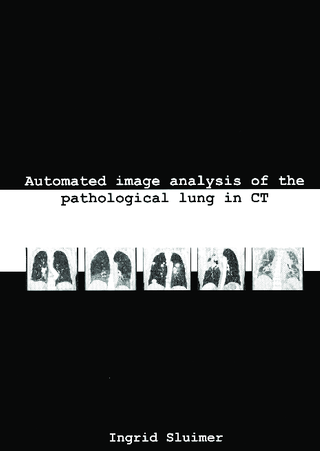Automated image analysis of the pathological lung in CT
I. Sluimer
- Promotor: M. Viergever and W. Prokop
- Copromotor: B. van Ginneken
- Graduation year: 2005
- Utrecht University
Abstract
The general objective of the thesis is automation of the analysis of the pathological lung from CT images. Specifically, we aim for automated detection and classification of abnormalities in the lung parenchyma. We first provide a review of computer analysis techniques applied to CT of the lungs as published in the past five years. The rest of the thesis focuses on the steps needed for computer aided detection and diagnosis of disease in High Resolution CT (HRCT) images of the lung parenchyma: segmentation of the pathological lung, detection of abnormalities and classification of abnormalities. For the normal lung, segmentation can be performed making use of the excellent contrast between air and surrounding tissues. However, this approach fails when the lung is affected by high density pathology. Dense pathologies are present in approximately a fifth of clinical scans, and for computer analysis such as detection and quantification of abnormal areas it is vital that these pathologies are not missed in the initial segmentation. We propose a hybrid approach that incorporates atlas-based registration and voxel classification and as such responds to both shape and textural cues from both inside and outside the lung. It is shown that the proposed method can accurately segment scans with up to a quarter of the lung volume affected by high density pathology and therefore presents a considerable improvement over conventional techniques. After the lung fields have been identified, the task is to recognize possibly abnormal regions within them. We present an automated method for making the distinction between normal and abnormal lung tissue that makes use of the pattern recognition technique of statistical feature-based learning. Its performance in classifying a set of regions of interest (ROIs) is compared to that of two experts. It is concluded that the computer system is almost as adept at retrieving diagnostic information from the isolated ROIs as are the expert radiologists. However, performance of the radiologists when reviewing the entire scan is not rivaled by the automated system, indicating that further improvement should be sought in incorporation of the context of the ROIs. In the final chapter it is investigated whether the more complex differentiation between several types of abnormal tissue can be made automatically. This analysis is performed on the entire lung field, rather than a selected set of ROIs. To this end, we propose an automatic unsupervised method of subdividing the lung fields into regions that are homogeneous in texture. It is shown that the proposed subdivision more closely resembles freehand drawing than the popular square grid, and additionally improves the computer classification performance. In classification of the entire lung fields, the automated system mostly confuses the same classes as do the experts. On a more global scale, the computer is used to answer the question whether or not a certain type of abnormality is present in a slice. In this task it achieves accuracies comparable to that of the experts.
